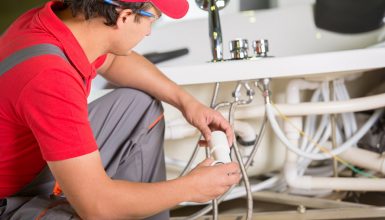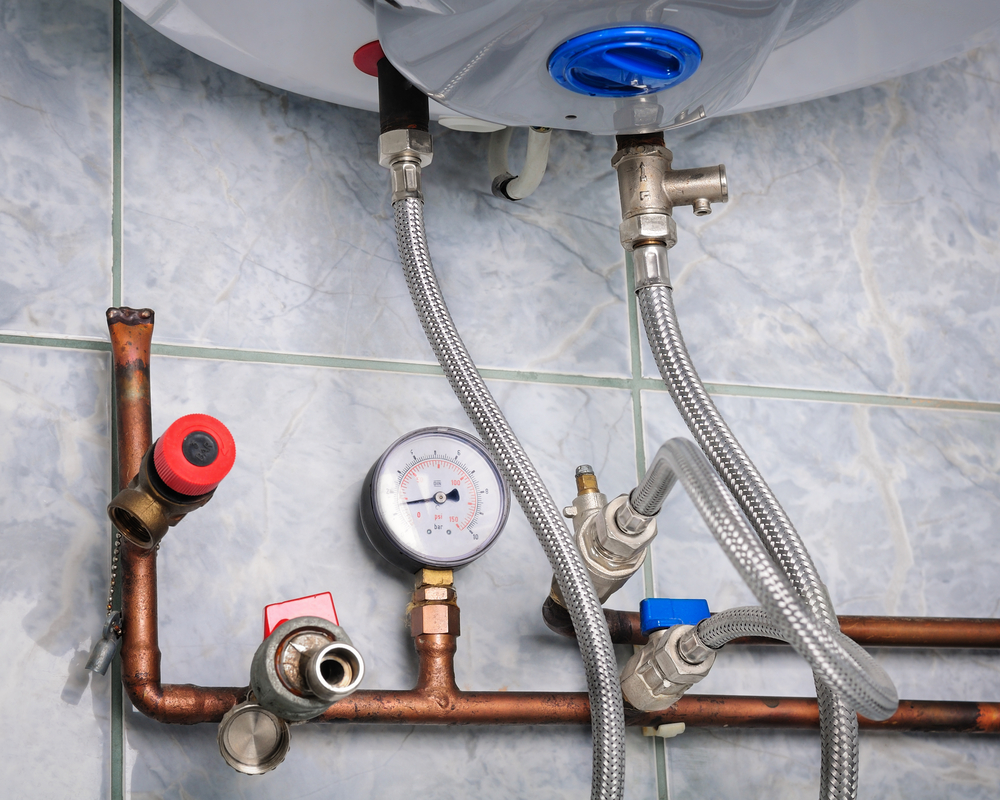We've discovered this great article about Dealing with Low Water Pressure in Your Home down the page on the net and felt it made perfect sense to discuss it with you here.

Low water pressure in your home can be an aggravating problem, affecting every little thing from bathing to cleaning recipes. If you're experiencing weak water flow, there are numerous possible causes and solutions to explore. In this overview, we'll go over common reasons for low water stress and practical steps to deal with the problem successfully.
Introduction to Low Water Pressure
Low water pressure occurs when the flow of water from your faucets, showers, and other fixtures is weak than usual. This can make day-to-day jobs much more challenging and less effective. Understanding the sources of low tide stress is essential to discovering the ideal option.
Typical Root Causes Of Low Tide Pressure
Faulty Pressure Regulators
Stress regulatory authorities are in charge of keeping constant water pressure in your house. If they malfunction, it can cause low water pressure or uneven circulation throughout your home.
Municipal Water Issues
In some cases, the problem exists outside your home. Community supply of water problems, such as main line leaks or maintenance job, can temporarily lower water pressure in your location.
Pipeline Obstructions
Over time, pipelines can come to be obstructed with mineral deposits, debris, or particles, limiting the circulation of water. This is an usual problem in older homes with galvanized steel pipelines.
Deterioration
Rust within pipes can bring about leaks and reduced water pressure. Corrosion build-up can constrict water flow, specifically in aging plumbing systems.
How to Diagnose Low Tide Stress
Checking Pipelines
Evaluate noticeable pipelines for indicators of leakages, corrosion, or blockages. Take note of any type of unusual sounds, such as knocking or rattling pipelines, which might indicate issues within the plumbing system.
Consulting with a Plumber
If you're incapable to determine the root cause of low water pressure, consider employing a professional plumber to carry out a detailed inspection. They can identify underlying problems and advise suitable services.
Examining Taps and Fixtures
Start by evaluating the water stress at different taps and fixtures throughout your home. If the problem is separated to details locations, it may indicate localized troubles.
DIY Solutions to Fix Low Water Stress
Flushing Water Heater
Sediment accumulation in the hot water heater can restrict circulation and reduce effectiveness. Purging the storage tank regularly aids remove sediment and preserve ideal performance.
Checking Pressure Regulator
Make sure that the stress regulatory authority is operating appropriately. Adjusting or replacing the regulator can assist bring back correct water pressure throughout your home.
Cleaning Aerators and Showerheads
Natural resources can build up in aerators and showerheads, decreasing water circulation. Get rid of and clean these parts routinely to improve water stress.
Cleaning Clogs in Pipes
For minor obstructions, try utilizing a plumbing serpent or chemical drainpipe cleaner to clear obstructions in pipelines. Be cautious when making use of chemicals and comply with safety standards.
When to Call a Specialist Plumber
If do it yourself efforts fall short to deal with the issue or if you think substantial plumbing problems, it's finest to look for help from an accredited plumber. They have the know-how and devices to address complicated problems safely and effectively.
Safety Nets to Keep Water Stress
Setting Up a Stress Booster
Take into consideration mounting a stress booster pump to improve water stress in locations with consistently low flow. This can be specifically advantageous for multi-story homes or residential properties with high-demand fixtures.
Surveillance Water Usage
Bear in mind water usage routines and avoid ill-using the plumbing system. Easy adjustments, such as astonishing showers and laundry lots, can assist preserve ample water stress.
Routine Maintenance
Set up routine upkeep for your plumbing system to avoid issues such as deterioration, leakages, and clogs. Attending to small problems early can aid stay clear of more significant repair services in the future.
Verdict
Taking care of low water stress can be frustrating, however determining the underlying causes and implementing suitable services can recover ideal circulation throughout your home. Whether it's cleaning up aerators, checking pipelines, or speaking with a plumber, taking aggressive steps can ensure a constant supply of water for your day-to-day needs.
FOUR WAYS TO FIX LOW WATER PRESSURE NOW
Turning on a shower or faucet only to find the water comes out in a sad, slow drizzle is never a good feeling. How exactly are you supposed to wash a pan or take a quick shower when it takes 10 minutes just to rinse off a little soap? The good news is that when your water pressure is bad, there's always a cause: typically one that can be easily fixed. Here are some of the most common causes of low pressure and what you can do to fix the issue:
DEBRIS AND MINERAL DEPOSIT BUILDUPS
If you notice low water pressure from just one or two of the fixtures in your house, the problem likely has to do with debris buildup. Water is full of minerals and other debris, all of which can accumulate in your pipes and on your fixtures. This can cause a blockage that affects how much water flows through. To fix this, try filling a small plastic bag with white vinegar, and use a rubber band to hang it around your showerhead or faucet. Let the head of the fixture soak for a few hours, and the vinegar should loosen the deposits.
WATER LEAKS
Leaks are another common cause of low water pressure. If water is flowing out of your plumbing through a hole or crack before it can reach your fixture, the pressure coming out of the faucet or showerhead will be lower. A plumbing professional is your best bet for finding and repairing a leak in your water supply pipes.
Leaks are another common cause of low water pressure. If water is flowing out of your plumbing through a hole or crack before it can reach your fixture, the pressure coming out of the faucet or showerhead will be lower. A plumbing professional is your best bet for finding and repairing a leak in your water supply pipes.
A VALVE ISSUE
If you have low water pressure throughout your home, check your main shut-off valve to make sure it's completely open. You may also want to see if there's a pressure-reducing valve installed. If there is, have a plumber help you adjust the settings to get the pressure you're looking for.
OTHERS USING WATER
Believe it or not, your low water pressure could be caused by your neighbors. If you notice low pressure at certain times of day, it may be because you and the people living next to you have similar schedules - when everyone is showering at the same time, the pressure will be lower in every home. Low pressure throughout the neighborhood may also be caused by an issue with your municipal water supply. If that's the case, call the supplier to see if they're working on the issue.
https://www.rotorooter.com/blog/water-leaking/low-water-pressure-fixes/

I came across that write up about Dealing with Low Water Pressure in Your Home when surfing around the web. In case you enjoyed reading our article plz do not forget to share it. Kudos for being here. Come back soon.
Schedule Service